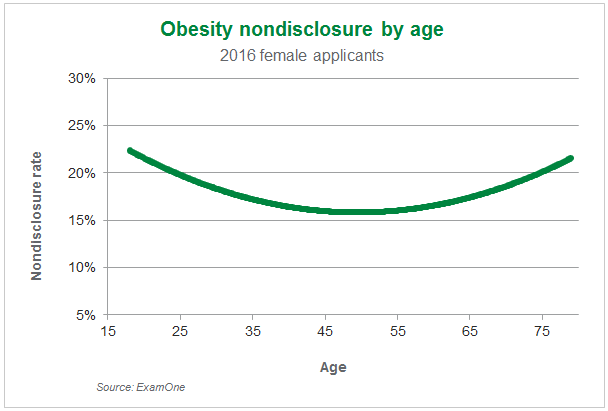Five common diagnoses found in female life insurance applicants’ historical laboratory results

Using laboratory testing history databases to evaluate applicant risk can provide underwriters a more complete picture of applicant health. Laboratory history data provides quick access to physician-ordered laboratory testing results, it verifies applicant self-reported medical disclosure, and it can reduce costs as a possible alternative to an Attending Physician Statement order. Find out some of the benefits of using this data in the underwriting process.
LabPiQture™, ExamOne’s unique laboratory testing results database, provides deep insights into the health history of applicants. During Women’s Health Month, we’ve taken a deeper look at the conditions most commonly diagnosed in female life insurance applicants.
Top five diagnoses found in historical laboratory reports of female life insurance applicants
Encounter for general exam without complaint, suspected or reported diagnosis
This encounter captures most general exams that are not the result of a complaint or other diagnosis. In laboratory data, this code is most commonly associated with routine non-OBGYN checkups, and is seen commonly in both men and women. For underwriting, this can generally be considered a low-risk code and may indicate an applicant who is active in maintaining his or her health.
Disorders of lipoprotein metabolism and other lipidemias
Lipid metabolism disorders affect the conversion of lipids into energy, oftentimes causing harmful amounts of lipids to build up in the body. These build-ups can result in cell and tissue damage in the brain, nervous system, liver, spleen and bone marrow. In laymen’s terms, this is the most common code for high cholesterol and is generally associated with lipid panel (total cholesterol, HDL, triglycerides, etc.) results.
Encounter for other special exam without complaint, suspected or reported diagnosis
In our data, these almost exclusively indicate OBGYN encounters involving pap smears. This code can be used to capture encounters related to dental, vision and hearing; however these do not generate laboratory/tissue specimens. Pap smears are the most common tissue pathology results in the LabPiQture database and are often accompanied by HPV (a virus linked to cervical cancer) screens.
Essential (primary) hypertension
This is high blood pressure that doesn’t have a known secondary cause and tends to develop gradually over many years. Risk factors of primary hypertension include age, weight, family history and tobacco use. Complications may include heart attack or stroke, aneurysm, heart failure, and metabolic syndrome—which increases the chance of developing diabetes.
Encounter for screening for infectious and parasitic diseases
This encounter can denote screenings for various bacterial or viral diseases, such as tuberculosis and HIV. As a screening code, this header is most often associated with STD (including HPV) panels. In the large majority of cases (as in HPV and prenatal screens), these are routine tests with comparatively low positivity rates. In certain subpopulations, however, this code can be suggestive of high-risk behavior, including intravenous drug use.
Other common diagnoses in female life insurance applicants
Insurers should also be aware of additional diagnoses among
female life insurance applicants, such as the following.
(E03) Other hypothyroidism – 13.6%
(E11) Type 2 diabetes mellitus – 10.8%
(R73) Elevated blood glucose level – 9.0%
(E66) Overweight and obesity – 5.4%
This statistic is interesting to note for insurers, especially since an ExamOne study found a notable rate of obesity nondisclosure in female applicants.

Summary of the analyzed population
In our analysis of the most common diagnoses in female life insurance applicants, the mean age of a female applicant with a LabPiQture hit was 45. The mean encounter count for a female hit was 19, but this conceals a substantial level of variation. The median encounter count was 10, while 13% of hits involved only a single encounter, and 1% of hits involved 73 or more unique testing events.
Gathering a comprehensive health picture of your applicants
Laboratory history data can be a valuable resource for insurers determining applicant health risk. When evaluating this type of diagnosis data, it’s also important to remember that some codes are tentative, or ruled-out by subsequent testing, and do not always confirm the current presence of a disease. This is where additional health data sources can further inform or confirm suspected conditions.




